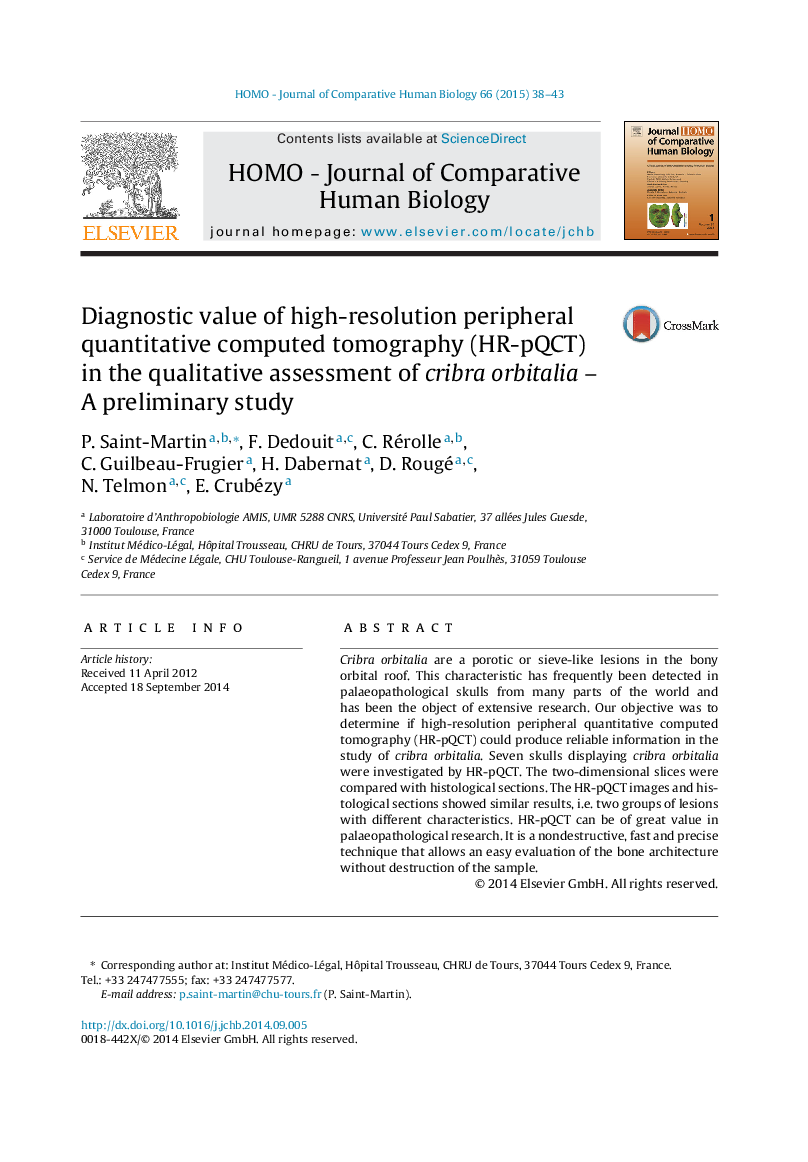| Article ID | Journal | Published Year | Pages | File Type |
|---|---|---|---|---|
| 100073 | HOMO - Journal of Comparative Human Biology | 2015 | 6 Pages |
Cribra orbitalia are a porotic or sieve-like lesions in the bony orbital roof. This characteristic has frequently been detected in palaeopathological skulls from many parts of the world and has been the object of extensive research. Our objective was to determine if high-resolution peripheral quantitative computed tomography (HR-pQCT) could produce reliable information in the study of cribra orbitalia. Seven skulls displaying cribra orbitalia were investigated by HR-pQCT. The two-dimensional slices were compared with histological sections. The HR-pQCT images and histological sections showed similar results, i.e. two groups of lesions with different characteristics. HR-pQCT can be of great value in palaeopathological research. It is a nondestructive, fast and precise technique that allows an easy evaluation of the bone architecture without destruction of the sample.
